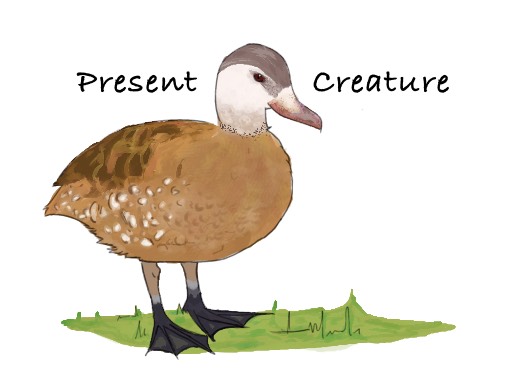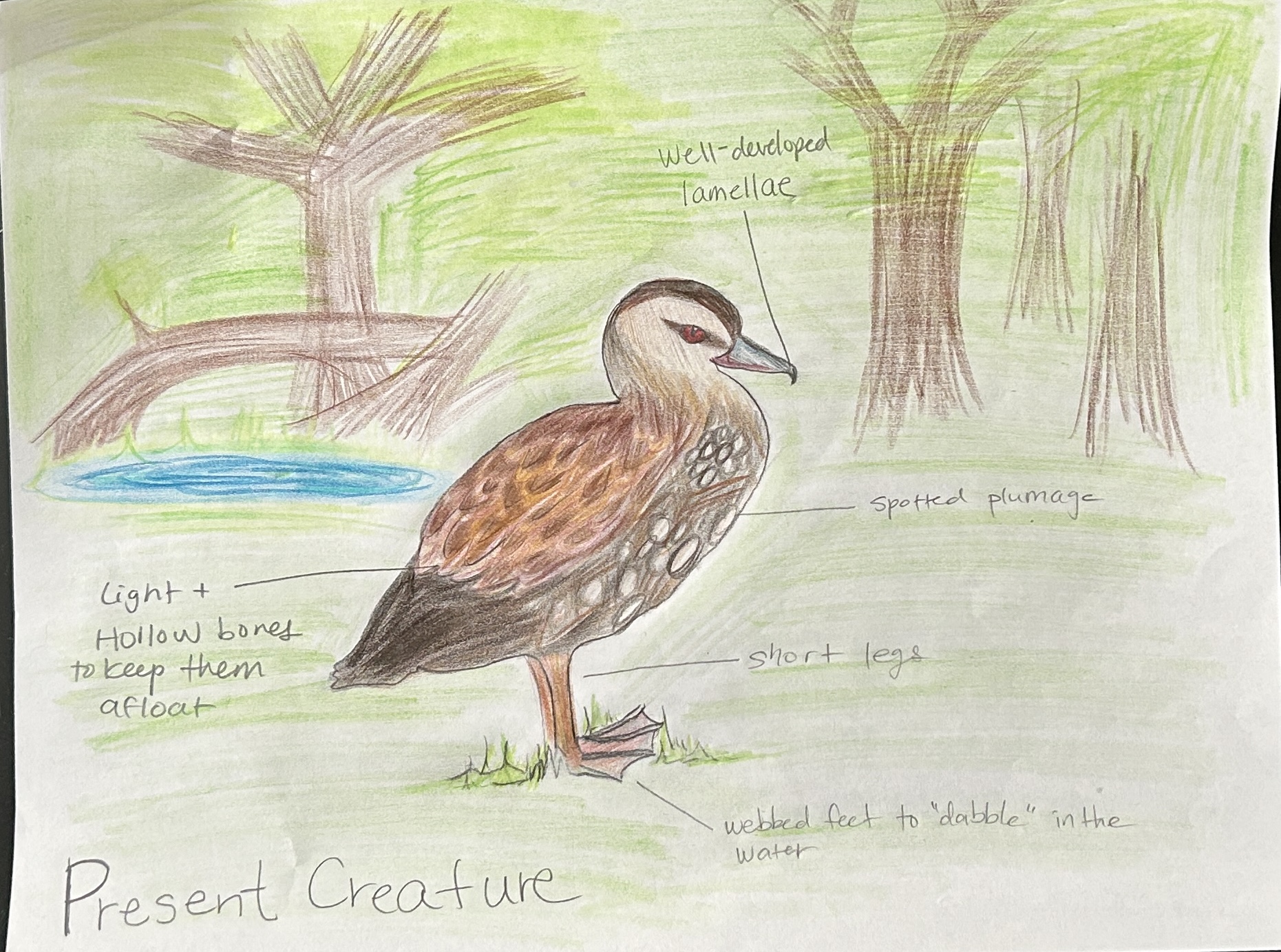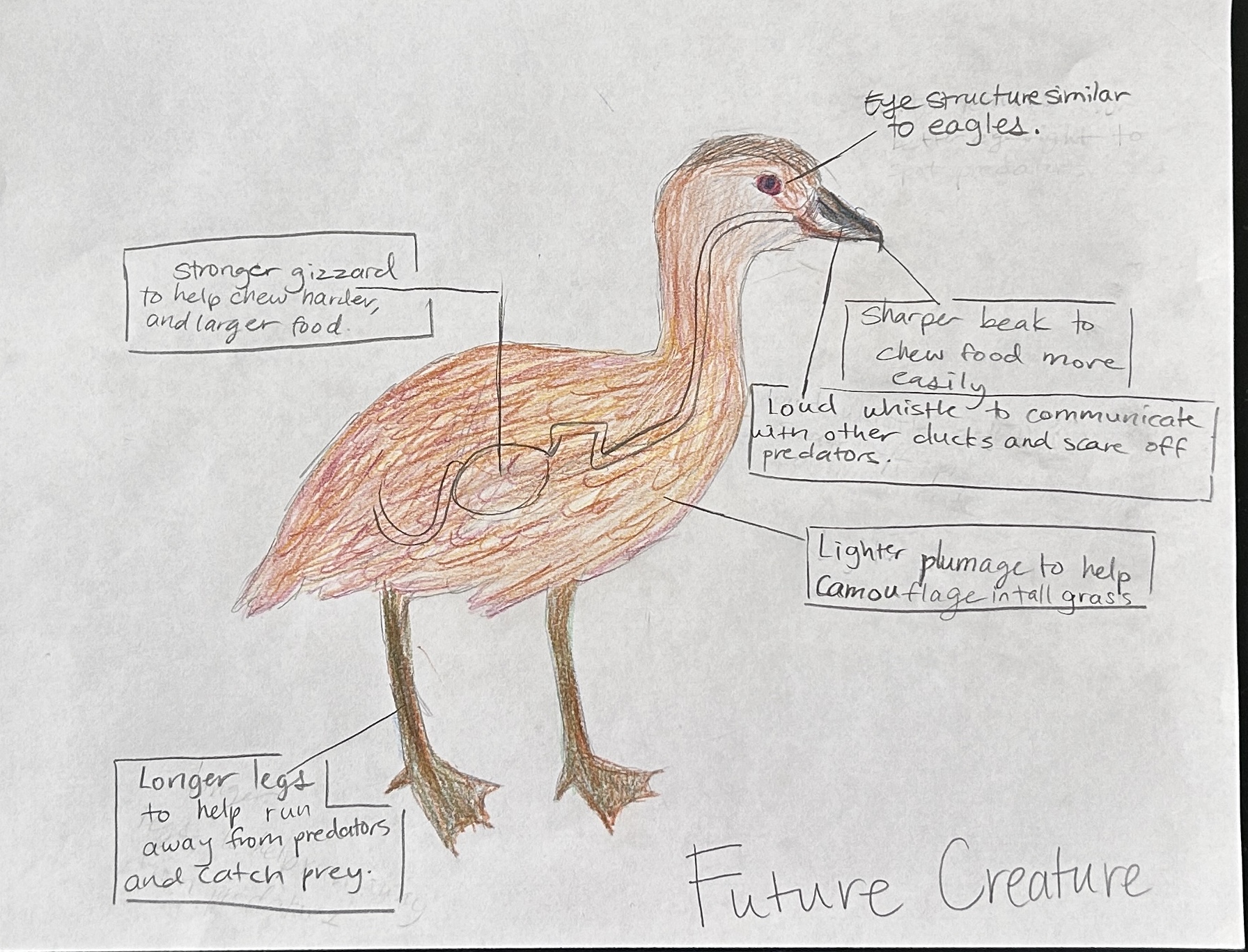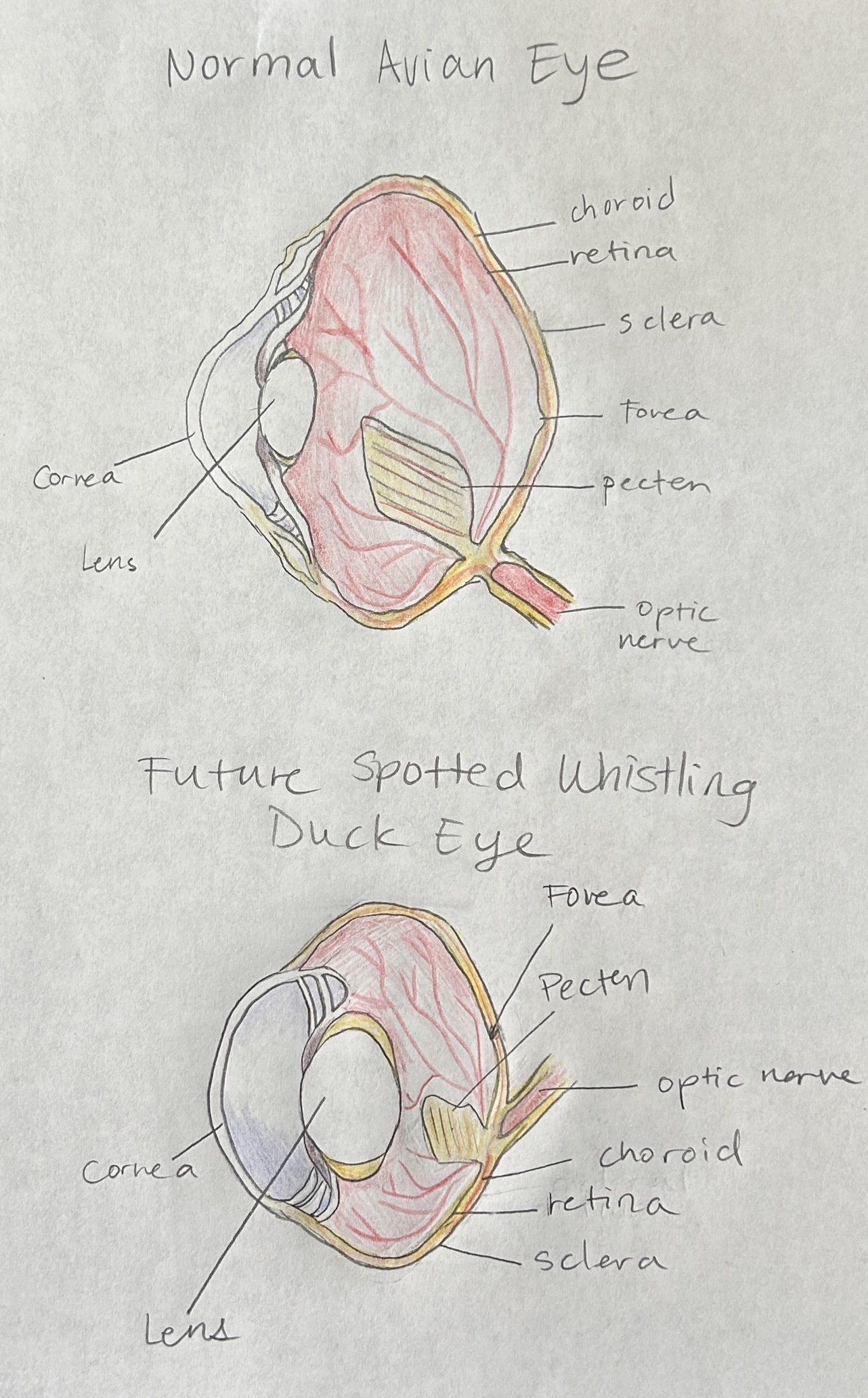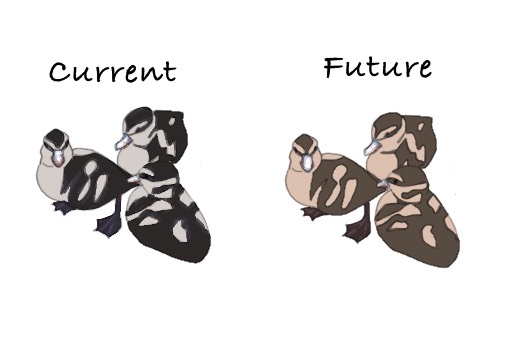The spotted whistling duck currently lives in marshes, low-lying wetlands, and many other small bodies of water. The habitat will later change into a savanna. They are equipped with longer legs to run from predators and they will still have their oily layer on their feathers, although their plumage will turn from a darker brown to a lighter plumage resembling the tall grass in the savanna. They will have a stronger gizzard to help them chew more hard, and larger food. The duck will also have keener eyesight due to the change in eye structures to spot predators from far away and can catch prey faster than an average duck can. The environment change leads to a change in the spotted whistling ducks’ food supply. Their diet will consist of more seeds and insects. These adaptations will increase their chances of survival, making the ducks well-adapted to their new environment.
Contact us
Thank you for your interest in contacting Future Engineers. We look forward to connecting with you!
General Inquiries
support@futureengineers.orgSponsorship Inquiries
sponsor@futureengineers.org
